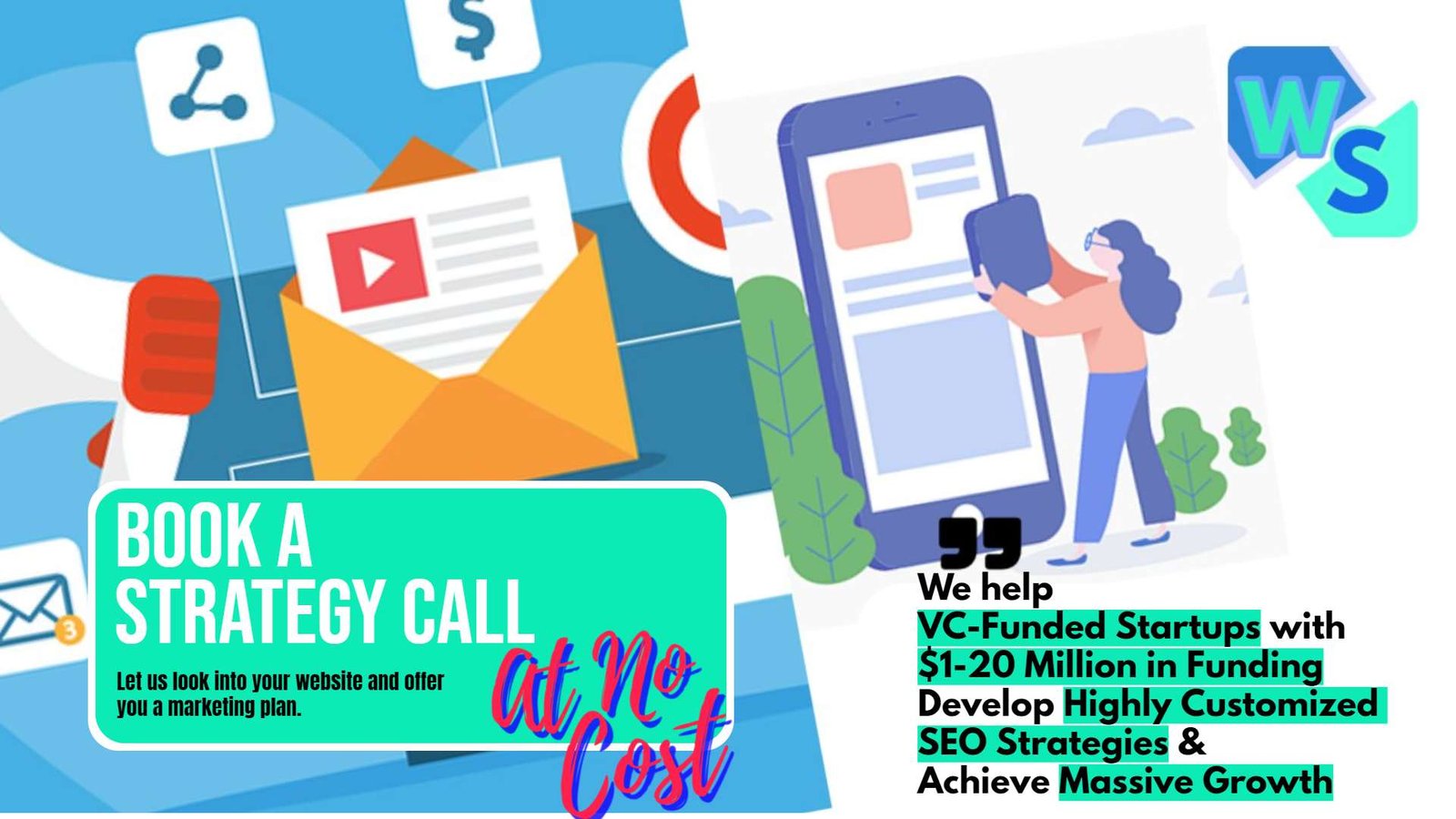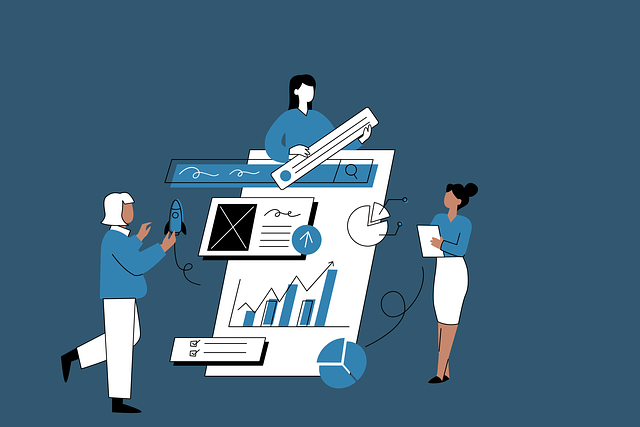In the world of marketing, attracting leads is just the first step. The real challenge lies in finding high-quality leads at the lowest possible cost. Without a focused strategy, businesses often waste resources chasing audiences that don’t convert, driving up their customer acquisition cost (CAC) and lowering ROI. That’s where data-driven targeting comes in.
Data-driven targeting helps you reach the right audience, reduce waste, and improve the quality of leads while keeping your CAC in check. By leveraging analytics and tailoring your campaigns to what the data reveals, you can achieve results that are both impactful and cost-effective.
Let’s dive into how to effectively use data-driven targeting to refine your strategy, cut costs, and attract better leads.
Step 1: Define Your Ideal Customer Profile
Start with the Basics
The foundation of any data-driven targeting strategy is a clear understanding of your ideal customer. Who are they? What do they need? And why would they choose your product or service? Start by analyzing your existing customer base. Identify patterns in demographics, behaviors, and purchasing habits.
For example, if you’re a SaaS company selling project management tools, your ideal customers might be small-to-medium business owners or team leaders in specific industries. Pinpoint details like their job titles, company size, pain points, and goals.
This profile will serve as a blueprint for all your targeting efforts, helping you focus on prospects who are most likely to convert.
Segment Your Audience
Once you’ve established a general profile, segment your audience into smaller, more specific groups based on shared characteristics. For example, your segments might include:
- Startups looking for affordable solutions
- Enterprise teams needing advanced features
- Freelancers seeking simplicity
This segmentation ensures that your campaigns are highly relevant, which improves engagement and ultimately reduces your CAC.
Step 2: Collect and Analyze Data
Use Analytics to Understand Behavior
Analytics tools are your best friend when it comes to data-driven targeting. Platforms like Google Analytics, HubSpot, and even social media insights offer a wealth of information about how users interact with your content, ads, and website.
For example, track metrics like:
- Time spent on key pages
- Conversion rates by traffic source
- Engagement levels for different ad creatives
Analyzing this data reveals which channels, messages, and strategies resonate with your audience. If you find that email campaigns drive higher-quality leads than social media ads, you can adjust your budget accordingly.
Leverage CRM Data
Your CRM is another goldmine of insights. Look at data from past leads and customers to identify trends. For instance, what traits do your highest-value customers share? Are there commonalities in how they found you or why they converted?
By aligning your targeting efforts with these insights, you can replicate success while avoiding low-quality leads that don’t match your ideal customer profile.
Step 3: Choose the Right Platforms for Your Audience

Match Your Channels to Your Customers
Not every platform will work for every audience. Data-driven targeting means understanding where your ideal customers spend their time online and focusing your efforts there. For instance, LinkedIn is often the best choice for B2B marketing, while Instagram or TikTok might be better for lifestyle or retail brands.
Use data to confirm where your highest-quality leads are coming from. If Google Ads consistently drives leads that convert into long-term customers, allocate more budget to that platform. If a social media channel generates a lot of clicks but no conversions, reconsider its role in your strategy.
Experiment with New Channels
Don’t be afraid to test emerging platforms or strategies. Run small pilot campaigns to gauge their effectiveness before scaling. For example, if your competitors are using YouTube ads successfully, try a test campaign to see if it resonates with your audience. Use data to decide whether to expand or pivot.
Step 4: Refine Your Messaging with Personalization
Speak Directly to Each Segment
Data-driven targeting allows you to craft personalized messages that address the specific needs of each audience segment. Generic messaging often fails to engage because it doesn’t feel relevant. Instead, use what you know about your audience to tailor your content.
For example, if you’re targeting startups, emphasize affordability and scalability in your messaging. If you’re speaking to enterprises, focus on robust features and integrations. Personalization creates a stronger connection, which improves engagement and lead quality.
A/B Test for Optimization
Never assume you know what works best—test it. Use A/B testing to compare different headlines, images, CTAs, or offers. For example, run two variations of a Facebook ad: one highlighting a free trial and another focusing on a limited-time discount. Analyze the results to determine which approach resonates most with your audience.
Continuous testing and refinement ensure that your messaging remains effective and aligned with what your audience values.
Step 5: Implement Retargeting Campaigns
Re-Engage Warm Leads
Not all leads will convert on their first interaction with your brand. Retargeting campaigns allow you to reconnect with users who have shown interest but haven’t taken action. These prospects are often closer to conversion than cold leads, making retargeting a cost-effective way to lower CAC.
For instance, if someone visits your pricing page but doesn’t sign up, a retargeting ad could remind them of your free trial or a limited-time offer. By staying top-of-mind, you increase the likelihood of conversion.
Use Dynamic Retargeting
Dynamic retargeting takes personalization to the next level. Instead of showing generic ads, display content tailored to what the user viewed or engaged with. For example, if a user browsed specific products on your e-commerce site, retarget them with ads showcasing those exact items.
Dynamic ads are more relevant and engaging, which leads to higher conversion rates and improved lead quality.
Step 6: Optimize Bidding Strategies with AI

Automate for Efficiency
Manual bidding can be time-consuming and imprecise. Many ad platforms now offer AI-driven bidding strategies that optimize your spend based on conversion likelihood. For example, Google’s Smart Bidding uses machine learning to adjust bids in real time, ensuring you get the most value from your budget.
These tools analyze vast amounts of data, such as user behavior, device type, and location, to make smarter decisions than a human could in real time. By adopting AI-driven bidding, you can maximize efficiency and reduce wasted spend.
Focus on High-Intent Audiences
Instead of casting a wide net, allocate your budget to high-intent audiences who are more likely to convert. For example, users who search for terms like “buy [product] now” or “best [service] provider” are closer to making a decision than those using broad keywords.
By targeting high-intent audiences, you increase the quality of your leads while lowering your CAC.
Step 7: Monitor, Measure, and Adjust
Track KPIs Regularly
Success with data-driven targeting requires constant monitoring. Keep an eye on KPIs like conversion rates, cost-per-lead, and lead quality metrics. If a campaign is underperforming, analyze the data to identify the issue—whether it’s targeting, messaging, or platform choice.
For example, if you notice that a specific audience segment has a high CPC but a low conversion rate, it might be worth refining or dropping that segment. The goal is to continuously optimize your campaigns based on real-time data.
Iterate and Scale
Once you’ve identified what works, scale those strategies. Allocate more budget to high-performing campaigns while phasing out underperforming ones. Use the insights you’ve gained to inform future campaigns, creating a cycle of continuous improvement.
Step 8: Use Predictive Analytics to Anticipate Trends
Harness Predictive Models
Predictive analytics takes data-driven targeting to the next level by using historical data to forecast future behaviors. This approach helps you identify patterns and trends, allowing you to anticipate what your audience needs before they realize it themselves.
For example, if your data shows that customers tend to purchase specific add-ons a few months after their initial purchase, you can proactively target them with ads promoting those add-ons. Predictive models also help you allocate resources more effectively by showing which campaigns are likely to deliver the best ROI.
Predictive analytics tools like Salesforce Einstein, IBM Watson, or even Google’s built-in ad recommendations provide actionable insights that reduce guesswork and optimize your targeting strategy.
Tailor Campaigns for Seasonality and Cycles
Certain industries experience predictable trends and seasonal cycles. For instance, a fitness brand might see a spike in interest around New Year’s resolutions, while a retailer may see increased activity during the holiday season.
By analyzing historical data, you can align your campaigns with these trends, ensuring that your messaging is timely and relevant. For example, start promoting your summer sales weeks before the season begins to capture early buyers.

Related: Check out our free tools:

Step 9: Leverage Lookalike Audiences
Expand Your Reach Smartly
Once you’ve identified your high-quality customers, lookalike audiences allow you to find similar prospects. Most ad platforms, such as Facebook and Google, offer lookalike audience features that analyze the characteristics of your existing customers and target users with similar profiles.
For instance, if your current customers share common traits like job roles, interests, or purchasing behavior, the platform will find users who match those traits. This allows you to reach new, relevant audiences without starting from scratch.
Fine-Tune Your Lookalike Parameters
Not all lookalike audiences are created equal. Narrowing the parameters of your lookalike campaigns can significantly improve lead quality. For example, instead of creating a broad audience that resembles all your customers, focus on your top 10% of customers with the highest lifetime value.
This level of precision ensures that your campaigns attract leads who are more likely to convert and provide long-term value.
Step 10: Focus on Content That Converts
Align Content with Buyer Intent
Your content strategy should align with your audience’s position in the buyer’s journey. Data can reveal what types of content resonate most with your prospects at different stages, enabling you to create targeted content that drives conversions.
For instance, use educational blog posts or videos for top-of-funnel prospects, case studies or testimonials for mid-funnel leads, and detailed product comparisons or free trials for bottom-of-funnel leads. Each piece of content should serve a specific purpose and move the user closer to conversion.
Optimize Content Distribution
Use data to identify the best channels for distributing your content. If LinkedIn posts generate more engagement from your target audience than email newsletters, prioritize LinkedIn for promoting your high-value assets like whitepapers or webinars.
Additionally, A/B test headlines, formats, and CTAs to refine your content strategy continuously. For example, compare the performance of a downloadable e-book against a webinar to see which drives more qualified leads.
Step 11: Enhance Collaboration Across Teams
Integrate Marketing and Sales Efforts
Data-driven targeting doesn’t stop with marketing—it should inform your entire customer acquisition strategy, including sales. By sharing insights between marketing and sales teams, you can ensure that leads are nurtured effectively and consistently.
For example, if marketing identifies a high-performing audience segment, the sales team can tailor their pitches to address that segment’s specific pain points. Similarly, feedback from sales on objections or challenges faced during calls can inform future targeting efforts.
When marketing and sales work together seamlessly, it improves the overall customer experience and increases conversion rates.
Use a Unified Tech Stack
A unified tech stack, such as a CRM integrated with marketing automation tools, ensures that data flows smoothly between teams. Tools like HubSpot, Salesforce, or Marketo centralize your data, making it easier to track lead behavior, measure campaign effectiveness, and optimize targeting efforts.
Step 12: Prioritize Data Privacy and Compliance

Build Trust Through Transparency
As you leverage data to refine your targeting, maintaining user trust is critical. Be transparent about what data you collect, how it’s used, and how it benefits your audience. This transparency fosters trust and encourages users to engage with your brand.
For example, include clear privacy policies on your website and use consent banners to ensure compliance with regulations like GDPR or CCPA. Let your audience know that their data is secure and used responsibly.
Balance Personalization with Privacy
While personalization improves lead quality, overly intrusive targeting can alienate your audience. Use data ethically by focusing on aggregated insights rather than hyper-personalized tracking that might feel invasive.
For instance, instead of referencing specific user behaviors in ads (“We noticed you were looking at sneakers”), use more general language like, “Discover our latest sneaker collection.”
Step 13: Scale Your Strategy Sustainably
Start Small, Then Scale
Data-driven targeting requires testing and refinement before scaling. Begin with small, focused campaigns to validate your approach. Once you’ve identified what works, gradually increase your budget and expand your reach.
For example, if a retargeting campaign delivers strong ROI with a small audience, scale it by broadening the audience or increasing the frequency of your ads. This iterative process ensures that your campaigns remain efficient and effective as they grow.
Invest in Ongoing Learning
Data-driven targeting isn’t a one-time effort—it’s an ongoing process. Stay up to date with the latest tools, trends, and best practices in data analytics and digital advertising. Attend webinars, read industry blogs, and participate in forums to keep your skills sharp.
As new technologies like AI and machine learning continue to evolve, embracing these innovations will help you stay ahead of the competition and maintain sustainable growth.
Step 14: Embrace Cross-Channel Attribution for Deeper Insights
Understand the Full Customer Journey
One of the challenges of data-driven targeting is attributing success to the right touchpoints in a customer’s journey. Many leads interact with multiple channels before converting, and focusing on just one point (e.g., the final click) can skew your understanding of what’s truly working.
Cross-channel attribution models provide a more comprehensive view of how your channels work together to drive results. For instance, a customer might first discover your brand through a blog post, engage with a social media ad, and then convert via an email campaign. Assigning value to each interaction helps you see the bigger picture and allocate resources more effectively.
Choose the Right Attribution Model
Different attribution models serve different purposes. A “linear” model gives equal credit to all touchpoints, while a “time decay” model assigns more value to recent interactions. Select a model that aligns with your goals and the complexity of your campaigns.
For example, if you’re running a multi-channel campaign to promote a product launch, a position-based model might make sense—it assigns weight to both the first and last touchpoints, recognizing their role in generating awareness and driving conversions.
Using attribution insights, you can identify underperforming channels and reallocate budget to those driving the most value.
Step 15: Engage in Data-Enriched Partnerships

Collaborate with Complementary Brands
Partnering with complementary businesses can help you access enriched data and expand your targeting capabilities. For example, if you sell athletic gear, partnering with a fitness app could provide insights into user preferences and behaviors that align with your audience.
These partnerships enable you to reach new segments that are already primed for your offering, improving lead quality while keeping CAC low. Be sure to prioritize brands that share your commitment to data privacy and ethical practices.
Use Data Clean Rooms
For data sharing that complies with privacy regulations, consider using data clean rooms. These secure environments allow businesses to combine datasets without exposing raw data. For example, you could collaborate with a publisher to analyze overlapping audience segments for ad targeting, all while maintaining compliance with privacy laws like GDPR or CCPA.
Step 16: Leverage Real-Time Adjustments
Optimize Campaigns in Real Time
Data-driven targeting isn’t static—it thrives on real-time adjustments. Platforms like Google Ads and Facebook Ads offer live metrics that allow you to monitor campaign performance and make immediate changes.
For example, if a specific audience segment underperforms in the first week of a campaign, pause it and reallocate the budget to a higher-performing segment. Similarly, if an ad’s CTR is low but its impressions are high, tweak the creative or messaging to boost engagement.
Real-time optimization minimizes wasted spend and ensures your campaigns are always moving toward better outcomes.
Automate with AI Tools
AI-powered tools can handle real-time adjustments automatically, saving time while improving efficiency. Features like automated bidding, dynamic creative optimization, and predictive audience targeting allow you to refine your campaigns without constant manual oversight.
For instance, AI algorithms can adjust your bids based on factors like time of day, user device, or ad placement, ensuring your budget goes where it’s most likely to generate results.
Conclusion: The Future is Data-Driven
Data-driven targeting is more than just a marketing buzzword—it’s a proven way to reduce CAC, improve lead quality, and maximize ROI. By using insights from data to inform every step of your strategy, you can eliminate waste, attract the right audience, and create campaigns that truly convert.
From defining your ideal customer to leveraging predictive analytics and lookalike audiences, the steps outlined here provide a roadmap for smarter, more efficient targeting. The key is to remain agile—analyzing, testing, and refining your approach to meet the ever-changing needs of your audience.
With the right mindset and tools, data-driven targeting can transform your marketing efforts and position your business for long-term success. Start implementing these strategies today, and watch your CAC drop while your lead quality soars.
READ NEXT:
- Are Vanity Metrics Killing Your Marketing Efficiency? Here’s What to Track Instead
- Pinpointing Digital Marketing ROI: Why Your Metrics Aren’t Telling the Full Story
- Unlocking Real ROI in Digital Marketing: The Hidden Costs Draining Your Budget
- How Misaligned Marketing Funnels Are Blocking Your ROI Potential
- Best Digital Marketing Agency In Santa Ana, California
- Best Digital Marketing Agency In San Francisco, California





















